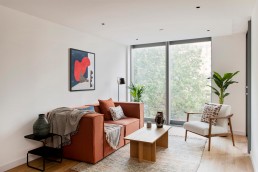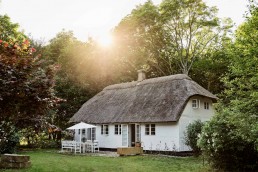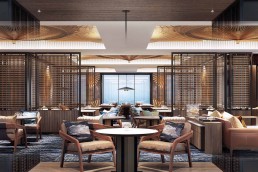Alagem Capital Group has partnered with Cain International to unveil One Beverly Hills, a mixed-use resort in California designed by Executive Architects Gensler, Foster + Partners and landscape architects Rios.
The 17.5-acre site is currently one of the largest and most environmentally-advanced private real estate development projects underway in the US, representing the unification of several properties adjacent to the Beverly Hilton and Waldorf Astoria Beverly Hills. Expected to open in 2026, One Beverly Hills will add three sustainable buildings to the existing site: two residential condominium towers and a third 10-storey building housing a 42-suite luxury hotel, a fine dining restaurant and 37 shared ownership condominiums, all set around eight acres of botanical gardens. The Beverly Hilton will also see extensive upgrades including a new arrival drive and lobby area, a refreshed ballroom, a restyled pool and 36 new poolside cabana rooms. A new 38,000ft² conference centre will also be kitted out with advanced technology and outdoor breakout areas.
“We are proud to be partnering with Cain International. Our shared commitment to building a beautiful and an environmentally responsible project will resonate for generations,” says Beny Alagem, CEO of Alagem Capital Group. “By combining elegant architecture with the most advanced technologies, we are defining development in a post-Covid world. One Beverly Hills is designed to reflect our Southern California lifestyle with deep, wide balconies and spacious rooms. The green of the gardens extends up the buildings’ facades, framing views from the mountains to the Pacific. This project could only be built in Beverly Hills. It is a city I have a deep connection with and am committed to investing in. One Beverly Hills will change the way sustainability and healthy living is approached and sets the standard for future development.”
Jonathan Goldstein, CEO of Cain International, comments: “One Beverly Hills perfectly reflects our mission to create forward-thinking spaces that seamlessly bridge commercial space, residential life, and community. Cain has made strategic investments across the US in some of the most notable and iconic ground-up developments and we are excited to deliver a landmark project together with the Alagem Capital Group that will represent a new architectural gateway to the iconic city of Beverly Hills. The scale, visually stunning architecture, public realm and environmentally conscious design initiatives established throughout One Beverly Hills will set a new standard and will shape the future of development for decades to come.”
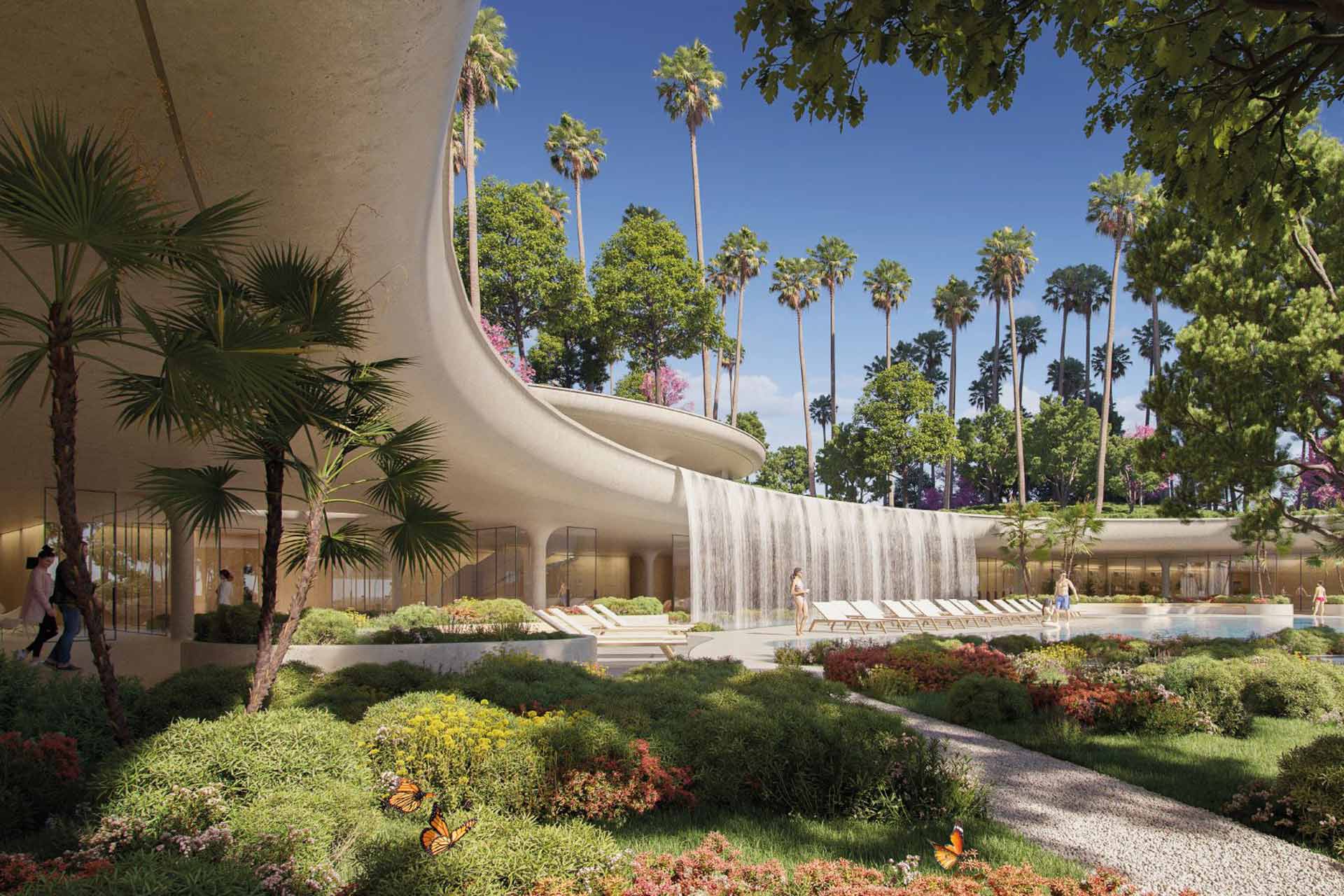
One Beverly Hills will include a private members’ club open to residents and a select number of non-residents. Members will enjoy 130,000ft² of space over three levels, divided into retreat, clubhouse and fitness areas. A spa will be the central hub of the retreat, while the clubhouse will be home to a private restaurant, lounge, a wine tasting room and cellar, screening rooms and bowling alley. The fitness area will offer a number of options for members at all levels of engagement including private training rooms, open cardio spaces, an indoor lap pool, indoor basketball and pickleball courts, as well as an outdoor facility.
At the heart of the development, the Botanical Gardens will be a sustainable oasis of wellness, encouraging exploration and relaxation. Foster + Partners have devised an elevated platform to be built from the western side of the property across to the Beverly Hilton to create the gardens. The 8-acre haven will be dedicated to over 40 tree and 250 plant species from 13 different botanical regions of California and feature curated sculptures, water features, shaded seating areas, two miles of pathways and other amenities. Predominantly planted with water smart landscaping, the entire garden will be irrigated through an extensive greywater system. A community-based conservancy made up of One Beverly Hills residents, school and community leaders, and representatives of the hotels will oversee educational programming and operations.
Norman Foster, founder and Executive Chairman of Foster + Partners, explains the inspiration behind the botanical gardens: “In its beginnings, Beverly Hills was agricultural flat land – a green oasis that fed a growing urbanity. A century later, we have seized on this inspiration to create an organic architecture that merges with landscape, a large part of which is publicly accessible, creating a shared resource for the city. The richness of Californian culture owes much to its diversity of influences, which comes together with the urgent need for sustainability – particularly conservation and recycling of water for the greenery. We welcome the opportunity to create a holistic masterplan based on a green approach across the entire site.”
Mark Rios, founder of Rios, gives his own take on the horticultural masterpiece: “One Beverly Hills is a remarkable and revolutionary project, for not only Los Angeles but also the entire West Coast. To create inspiration and sustainability within the open spaces of the site, we looked to establish curated botanical collections influenced by the native landscape of California, which has a wealth of natural beauty for us to draw from. These diverse botanical experiences utilise sustainable systems, such as a combination of reclaimed and storm run-off generated water, to ensure the One Beverly Hills will be a horticulturally-rich terrain and lush escape and serve as a nexus of wellbeing for the local ecology, residents and visitors alike.”
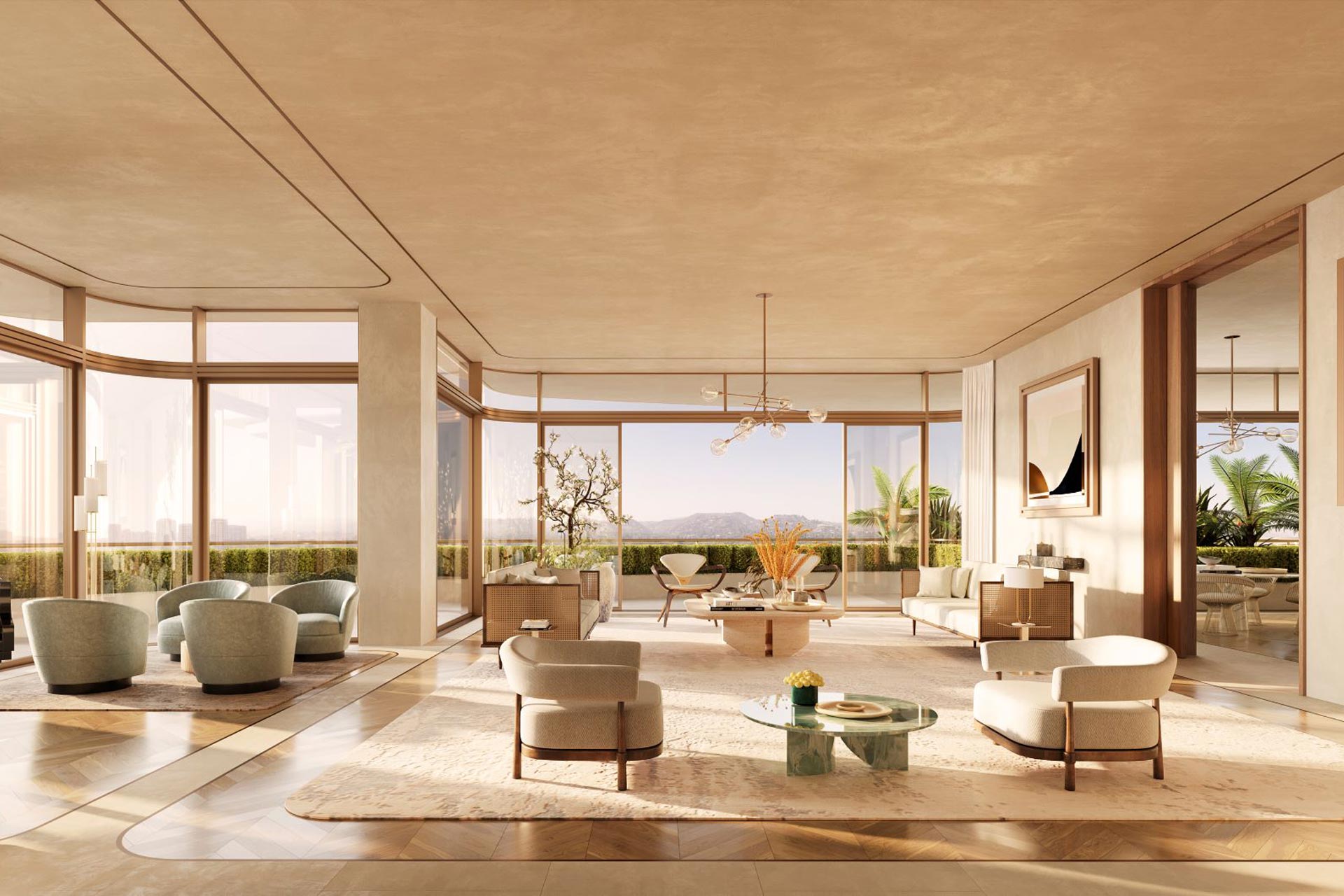
One Beverly Hills is invested in a sustainable future and has committed to being the benchmark for environmental sustainability, bringing together multiple technologies to aggressively lower emissions and energy consumption. As such, global sustainable building design and engineering firm, Glumac, is coordinating the systems that aim to achieve LEED Platinum and WELL certifications. The buildings of One Beverly Hills will use a central geothermal system too, harnessing the earth’s constant soil temperature to efficiently create heat, hot water and reject heat for cooling without the need to use gas. The system also reduces the number of cooling towers needed, which will save millions of gallons of water every year.
Using collected rainwater and recycled greywater, the One Beverly Hills landscape will be 100% water sustainable. In an effort to support grid harmonisation and safeguard local energy infrastructure, the project is also being designed with a significant centralised battery storage system, onsite photovoltaic array and a chilled water thermal energy storage system, which will allow the project to be flexible in managing electrical demand by minimising imported electricity in real time intervals when grid generation is composed of dirtier fuel sources. It will be responsive to local and utility-level demand response events too. The new 1.375 millionft² of buildings will be constructed from recycled, low embodied carbon and low toxicity materials. And for residents and guests, the space is set to promote multimodal mobility, encouraging walking, biking and alternative transportation, as well as offering EV charging capabilities in an underground car park.
“Together with Beny Alagem, his team and partners at Cain International, we are steadfast in achieving our Triple Bottom Line sustainability goals balancing social, environmental and economic objectives to reach two globally recognized standards: LEED Platinum and WELL Certifications,” says Nicole Isle, Chief Sustainability Strategist of Glumac. “Our mission is to establish One Beverly Hills as one of most environmentally conscious real estate developments on the world stage, with healthy and intelligent buildings and open spaces.”
One Beverly Hills will provide Beverly Hills and Los Angeles County with a significant source of jobs, taxes, and revenue – generating nearly $1 billion a year in local spending. The development agreement with the City of Beverly Hills guarantees a $100 million Public Benefit Fee as well as to creating other revenue streams.
